Articles and Features
Notes From The End of An Art Market
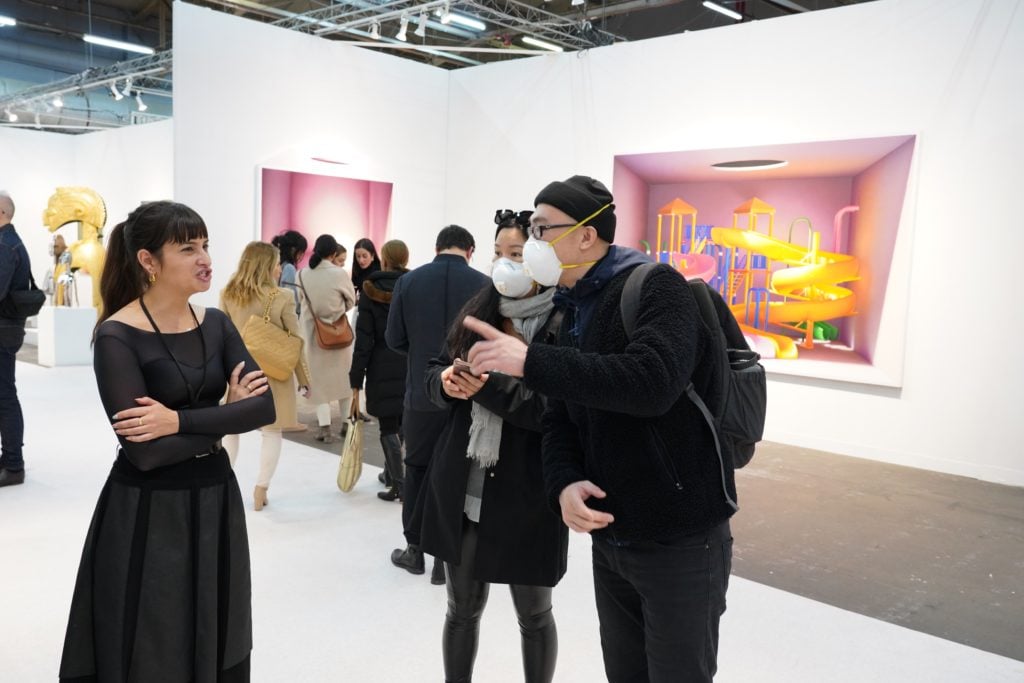
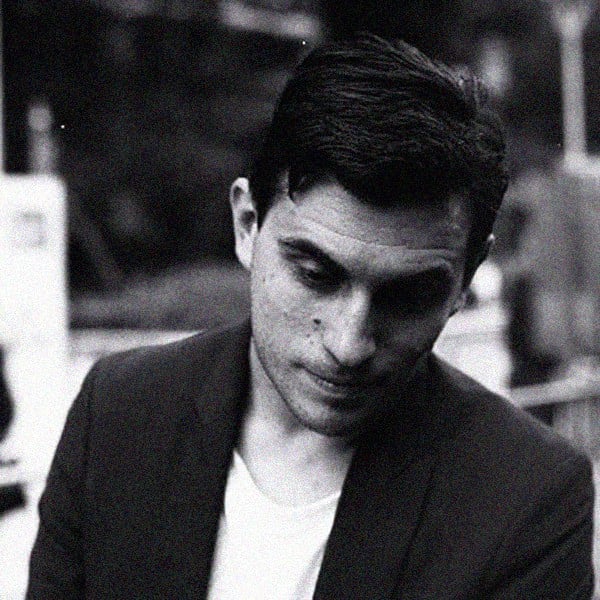
William Pym
Standards & Practices
Comedian Dave Chappelle has a bit in his last standup special where he talks about being called to the Standards and Practices department of his cable network and being told to do things differently. He’s not too bothered about what the network thinks. There’s a vulgar, uproarious punchline. I like the idea of standards and practices. It makes for a good joke. The enforcer of arbitrary rules and norms, a person whose job it is to frame what’s right, right now. For how can you tame a moment? In the international art world, where I have worked since 2002, I grew to become very familiar with a world of amorality, grandiosity and arrogance. I watched pre-2008 hypercapitalism change everyone’s style, and watched money get darker. Now the art world is being rebuilt, like everything else, in the image of a new generation. And one thing is true now as it was then — the art world is a place of porous standards, and practice takes many forms. I am still here, somehow, and I am the Standards and Practices department.
Three weeks ago, Monday lunchtime, I arrived in New York to set up the Armory Show. I wandered on to Pier 94 the same way I’ve wandered on to that steel shed on stilts for the past 17 years. Same stress as always, a low-level anxiety about covering my nut on an expensive week, and the same family-reunion buzz, with daps and hugs for my fellow art world tribespeople, some as close as family, followed by pre-game small talk that is 100% bromides about the health of the market. Gangs of bushy techs in branded t-shirts uncrated their respective responsibilities. Local union guys cruised the aisles in golf carts, laying down toxic event carpeting and refocusing the spotlights that they alone can touch. Powerful dealers appeared in tracksuit pants or sweatshirts, spectral visions, caught for a moment out of boss drag. Same as always, I scavenged for swag in the tote bag ‘exhibitor pack’ full of important bits of paper telling me things I would need to remember. This year, instead of the traditional litre of Fiji water, there was a rubberized reusable bottle with Armory branding. This trivial change of stocking-stuffer was the only thing different on day one in New York three weeks ago. It was just a normal week on the circuit getting started, same as it ever was. There was no indication that it might prove to be the final week of the international art season.
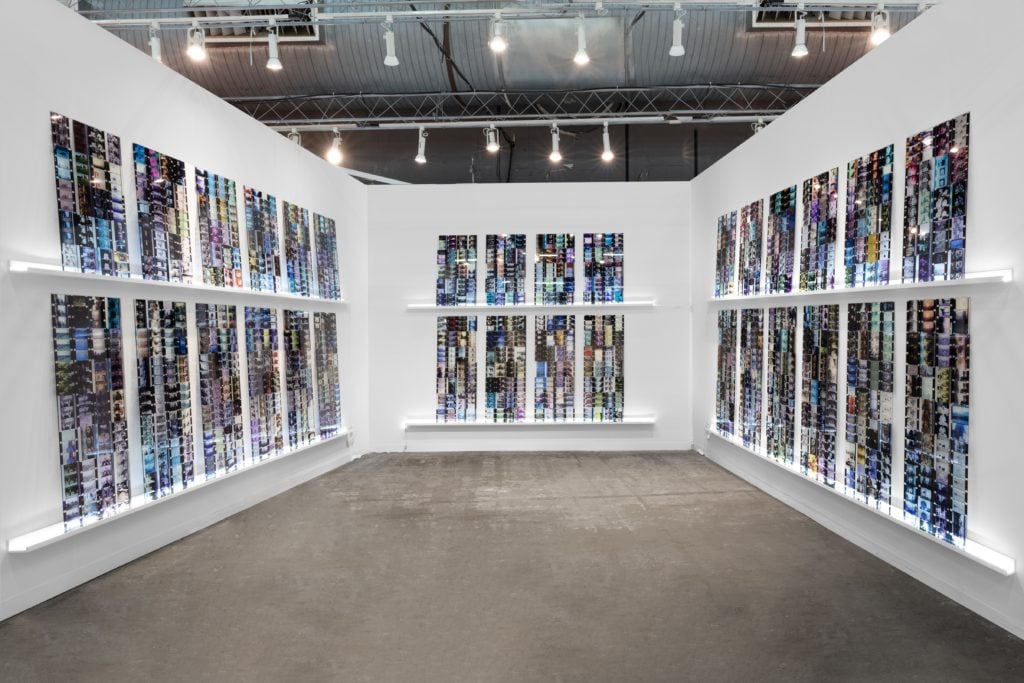
Photo Sebastiano Pellion di Persano, Courtesy the artist and APALAZZOGALLERY
On Tuesday morning, day two of setup, we had our first little jolt of reality. The booth of our neighbours, APALAZZO from Brescia, was empty apart from two coffin-like crates. No one apart from the shippers had shown up. The gallerists had been unable to leave Italy. Everyone was wrapping up their installations, heading to museums or studio visits and making plans for dinner, and the booth was empty. This never happens, and there was a fair degree of chatter going around. Eventually, things started happening. Some techs showed up, opened up the crates, threw up some shelves, and installed an exquisite wallpaper of glass transparencies of photographs by the late giant of cinema Jonas Mekas, rendered as blown-up contact sheets. By 4pm, two women showed up and started prepping with printouts and books. I worked with one of these women an era ago, a friend, she’d dropped out of the art scene altogether; she’d been hired a few hours ago through an email from Italy that had rapidly fanned out around the New York art network. She had no connection to the gallery. They blended into the scene quickly, and I quickly forgot that she was only there because of a virus which was rapidly expanding around the world. I just went back to my schedule. The gallery hosted a dinner in Greenwich Village, afterward we went to a packed downstairs piano bar with 80 people loudly singing showtunes. The virus didn’t occur to me down there.
Wednesday was opening day and we did business. Some galleries did great, others didn’t do much at all, same as usual. But the virus didn’t control the narrative. People were beginning to formalize the way we greeted each other; that was all. The elbow bump became a thing during the preview. Men and women didn’t make physical contact, they sort of stood and bowed at each other. That’s it. Everything else proceeded by the usual rules of engagement. Buyers were in the mix, advisors out in force. I went and ate a mountain of sushi and got assholed on cocktails with dealer friends that evening, same as every year.
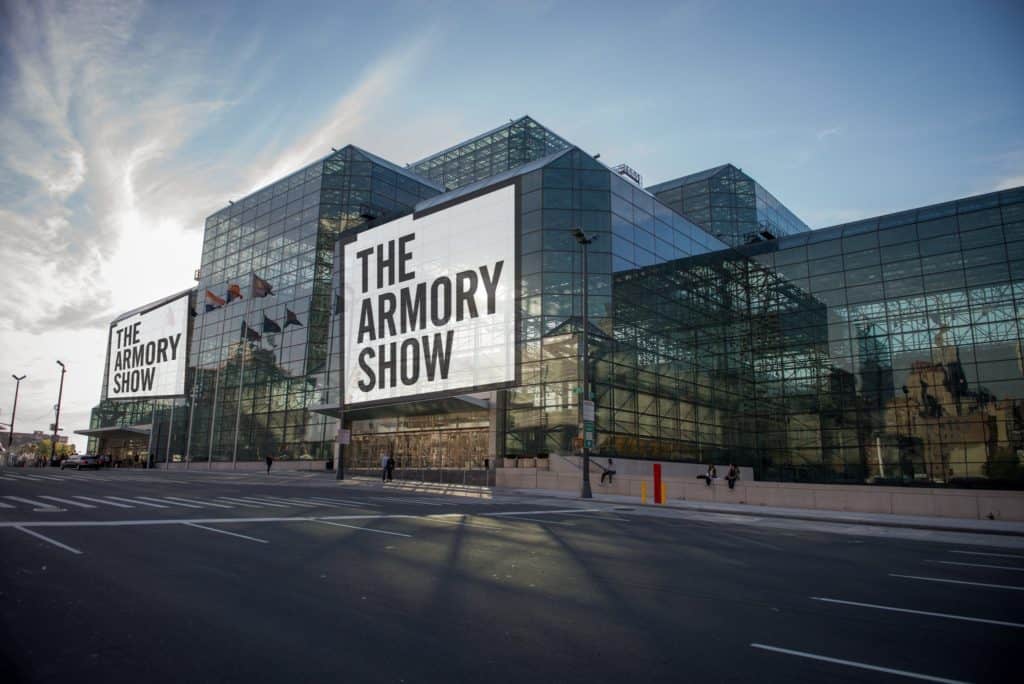
” the fine grain of social experience is worth documenting, because we will miss it, and its absence will be the first thing to drive us crazy.”
On Thursday the front pages were getting louder, and the business pages even more so. There was plenty of banter on the floor about the stock market, which was topsy turvy, and not indicating that it was going to settle. Things got a little quieter as people grew distracted. Certain collectors just didn’t show. The weekend was sedate. Higher-ups from international galleries started going home early. Some collector breakfasts around New York became more friends-and-family, less packed bagel station and empty coffee carafes. People really started avoiding physical contact. The Armory was certainly quiet, but it wasn’t a disaster. There was no petition sent round demanding refunds on lost business, the way Frieze New York exhibitors had leveraged the air-conditioning fiasco of the 2018 edition for some compensation. On the floor, dealer chit-chat moved on Friday to the announcement that next year’s edition of the Armory would not only take place at the Javits Center, a glass-curtained 1980s convention center near the expensive, futuristic Hudson Yards development on the west side, but would also reshape the art world calendar by moving to the first week in September. We joked affectionately about Pier 94 as we spent our last days working there, the billions of dollars of art on an old covered dock, the corrugated metal roof, the radiant coil heaters that made it feel like you were in a toaster oven. The birds that made their way in over the years. We had something to talk about. The hours rolled by, no one was freaking out. I got the last flight out Sunday night. JFK was deserted and the cabin crew were jittery. I was surprised how jittery they seemed. The gallery where I work shuttered temporarily and moved all business offsite 5 days later, around the same time as everyone else.
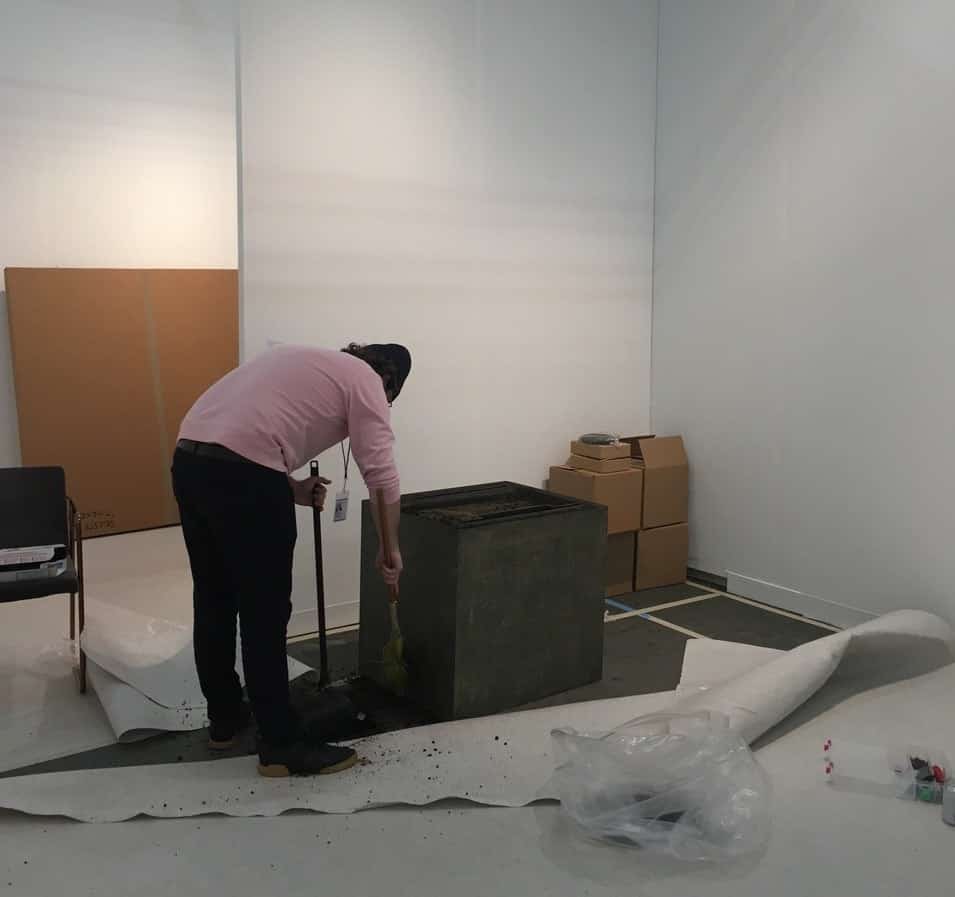
There is no punchline to this essay, no callback. None of those moments add up to a packaged payoff. It occurred to me that, during a period when we are going to see less of each other physically, in a pathologically social industry, that the fine grain of social experience is worth documenting, because we will miss it, and its absence will be the first thing to drive us crazy.
More importantly, however, with the Dallas Art Fair called off within days of the Armory closing, and Frieze New York called off a week later, and Art Basel’s postponement from June a foregone conclusion long before the formal announcement on March 26, the 2020 Armory Show may be both the final fair of the season and the final fair of the last art market, the last art world, the one that began in the ashes of the 2008 financial crisis. The art market turns like a ship, but it will recover, of course it will. For as long as we do the Capitalism thing and as long as art is a luxury commodity, the art world will just keep growing. 2008 to 2009 is a memory now, and it felt like the scene was on its last legs at times back then. The art world be fine. But it might well be different, and it might grow in a dramatically different form: more virtual, more nimble, more socially responsible. If the above is an elegy, I’ve every reason to be nostalgic, and look forward to what happens next.
Relevant sources to learn more
Armory Show Website
William Pym Standards & Practices, Vol.2 : Kalup Linzy
William Pym Standards & Practices, Vol.3 : Maurizio Cattelan
William Pym Standards & Practices, Vol.4 : Amalia Ulman